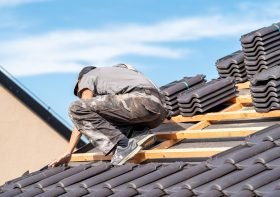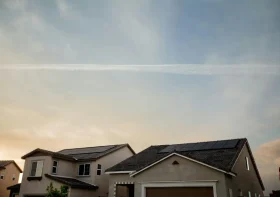How To Spot The Early Warning Signs That A Roof Needs Immediate Repair

Your roof is your home’s first line of defense against the elements. It shields you from rain, wind, snow, and harsh sunlight, day after day, year after year. Yet despite its importance, it’s often one of the most neglected parts of a home. Many homeowners overlook subtle problems that, if caught early, could prevent expensive repairs or even full roof replacements.
Identifying early warning signs can save thousands in repair costs and protect your property from extensive structural damage. Whether you’re dealing with an aging roof or just want to stay proactive, knowing what to watch for is critical to ensuring your roof’s long-term performance.
Contents
Sagging Or Uneven Roof Lines
One of the clearest indicators that a roof needs immediate attention is a visible sag or dip along the ridge line or roof plane. A well-maintained roof should appear straight and level. Sagging can be a sign of significant structural damage beneath the surface, such as weakened rafters, water-saturated decking, or foundation shifts.
This type of issue is rarely cosmetic. Left unchecked, it can lead to partial collapse or costly structural repairs. If you notice an uneven or drooping appearance when looking at your roof from a distance, it’s time to call in a professional to assess the situation.
Interior Water Stains Or Discoloration
Sometimes, the earliest warning signs don’t appear on the roof itself, they show up inside your home. Brown stains, bubbling paint, or discolored patches on your ceiling or upper walls are often caused by a leaking roof. These leaks may begin small but can expand quickly, leading to mold growth, compromised insulation, and damaged drywall.
Don’t assume these stains are just cosmetic flaws. Even if the leak seems minor or intermittent, water infiltration indicates that the roof’s protective layers have been breached. Prompt attention helps prevent more severe moisture damage throughout the home.
Missing, Cracked, Or Curling Shingles
Damaged shingles are among the most common signs of a roof in distress. Whether caused by high winds, hail, UV exposure, or simple wear and tear, missing or deformed shingles expose the underlayment and decking to the elements.
Curling or buckling shingles typically suggest that the roof is aging or that there’s poor ventilation in the attic. Cracked shingles can allow water to seep underneath, gradually weakening the roof’s integrity.
Conduct periodic visual inspections from the ground, and if you spot problem areas, arrange for a closer look by a qualified roofer. Prompt action helps you avoid more widespread shingle loss and water damage.
Granule Loss And Gutter Debris
Asphalt shingles are coated in granules that help deflect sunlight and add durability. Over time, especially as shingles age, these granules can wear off and accumulate in gutters or downspouts. While some granule loss is normal, excessive shedding can signal that your roof is nearing the end of its useful life.
If your gutters are constantly full of granules, it’s time to consult a professional for roof repair and installs before the issue escalates. Check your gutters regularly for gritty buildup, and take note of any unusually bare-looking shingles. This erosion exposes the asphalt underneath to UV rays, speeding up degradation and increasing the risk of cracks and leaks.
Daylight Or Drafts In The Attic
Your attic can tell you a lot about the condition of your roof. If you can see daylight filtering through the roof boards, there are likely holes or gaps in the roofing material. Even small openings can allow moisture and pests to enter, which undermines insulation and leads to decay.
Similarly, feeling a noticeable draft in the attic may mean that the roof’s barrier system is compromised. This can reduce your home’s energy efficiency, leading to higher utility bills and strain on HVAC systems.
Make it a habit to check your attic at least twice a year or after major storms to catch these warning signs early.
Mold, Mildew, Or Moss Growth
While moss may look charming in a storybook setting, it’s a serious red flag when growing on your roof. Moss, mold, and mildew all indicate excess moisture retention, which can weaken roofing materials over time and create breeding grounds for bacteria.
Moss in particular can lift shingles and allow water to seep underneath, accelerating rot and deterioration. Mildew or mold inside your attic or along eaves is another sign of trapped moisture due to inadequate ventilation or leaking components.
Removing surface growth is helpful, but if the underlying cause isn’t addressed, it will return, and the damage will continue to worsen.
Spotting these early warning signs is key to preventing extensive damage and maintaining a safe, efficient home. Regular roof inspections, both visual checks from the ground and professional evaluations, should be part of every homeowner’s maintenance routine. Whether it’s a sagging line, interior water damage, missing shingles, or moss buildup, acting quickly can save time, money, and peace of mind.



